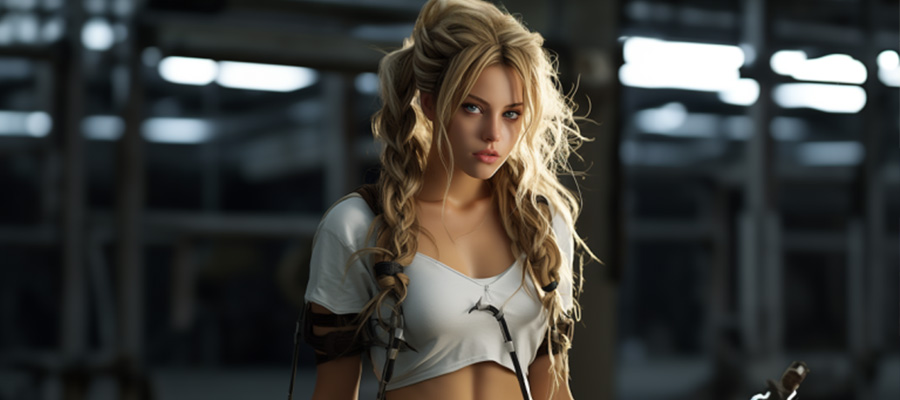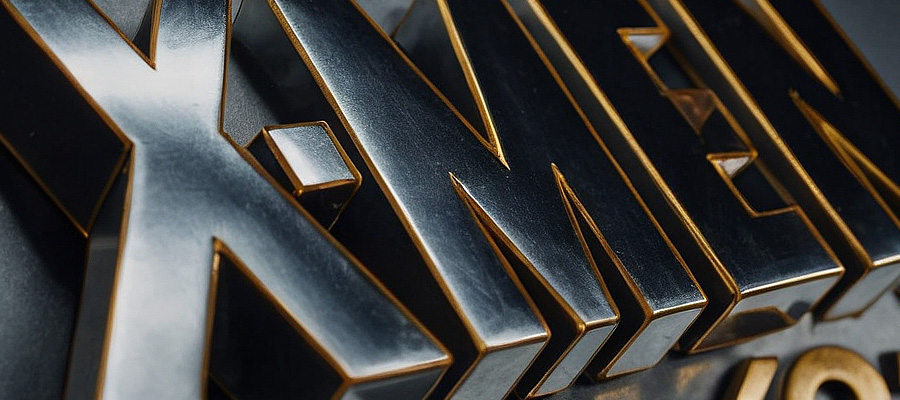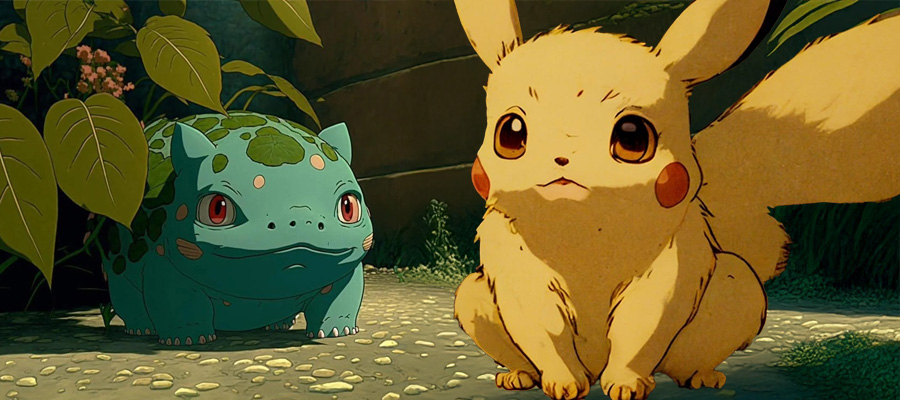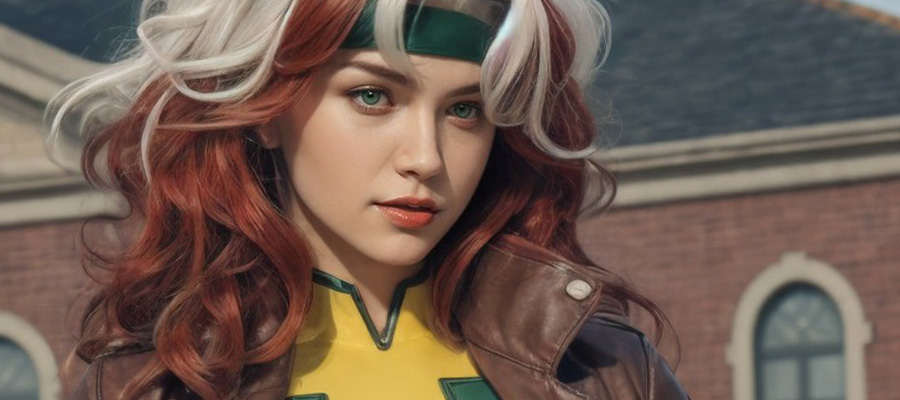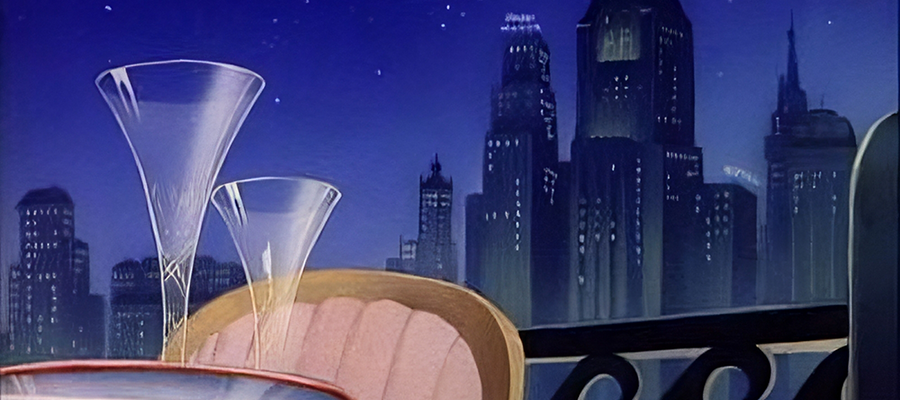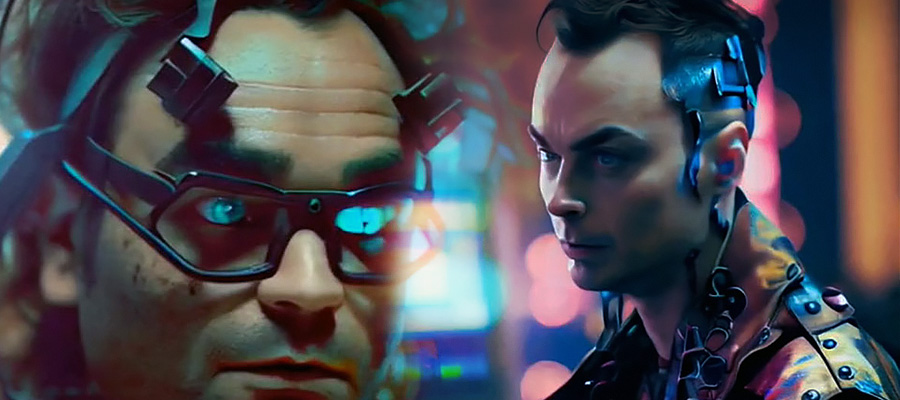Few creative fusions spark as much charm, or surprise, as blending 90s rap legends with the soft, dreamlike aesthetics of Studio Ghibli. Picture Biggie relaxing in a field worthy of My Neighbor Totoro, or Snoop Dogg meditating among fluttering soot sprites. This unexpected fusion of hip-hop icons and anime-inspired visuals captivates fans worldwide, introducing a refreshing take on Golden Age rap while celebrating the wonder of Hayao Miyazaki-style animation.
![]()
Interestingly, the calming nature of Ghibli’s pastel tones also resonates with the laid-back beats of lo-fi hip hop or some chill-out jazz. Much like the iconic “Lofi Girl” streams on YouTube, where a cartoon student is perpetually writing in a notebook under a softly lit lamp, Ghibli-inspired visuals create an equally cozy, introspective space. The gentle hues, minimalistic backdrops, and serene atmosphere all echo the same feeling you get from those chilled beats that loop for hours on end. It’s a reminder that sometimes, simplicity and a bit of ambient charm can transport us to a mindfully relaxed headspace, blending the whimsical daydream of anime with the soulful vibe of lo-fi hip hop.
Below is your ultimate guide to these reimagined portraits, featuring tips, tricks, and insights on how to fully appreciate this creative phenomenon. So sit back, adjust your headphones, and prepare to feel the nostalgia.
East Coast Icons Step into a Pastel Wonderland
Jam Master Jay: Pastel Swagger
Jam Master Jay stands against a mint-green sky with a pop of pink on his hat, casual yet commanding. This vibe echoes Run-D.M.C.’s classic style, now dipped in anime-inspired hues. Think of it as a peaceful pause in the middle of a once-thunderous DJ set.
![]()
Trick: Focus on one bold color (like pink) to highlight the subject’s iconic accessory, this helps anchor the image and boost visual interest.
The Notorious B.I.G.: Regal in Purple
Biggie reclines among rolling clouds, decked in luxurious purple attire and dripping gold chains. It’s reminiscent of a hero surveying his kingdom in a grand, skybound fortress. You can almost hear him rap, “It was all a dream,” echoing off a Laputa-like castle.
![]()
Big Pun: Boldness in the Clouds
Big Pun points skyward under a backdrop of soft, cartoonish clouds. His powerful stance reminds us of his lyrical prowess, yet the tranquil scenery tempers the usual intensity with a soothing aura. It’s the perfect visual metaphor for mixing hardcore hip-hop with whimsical fantasy.
![]()
Jay-Z: When Hustle Meets Wonder
Jay-Z, wide-eyed in a rosy sky, appears as though he’s just glimpsed a Ghibli spirit scuttling by. The synergy of a street-savvy mogul in a gentle, pastel setting highlights the duality of hustle and vulnerability, something Ghibli films often embrace.
![]()
Tip: If you want to capture that sense of wonder, use soft gradients and subtle highlights around the eyes. This technique can convey surprise or curiosity in a single glance.
Wu-Tang Clan & Method Man: Ensemble Magic
A group illustration of the Wu-Tang Clan showcases each member like a group-vibe, unified, a hallmark of Ghibli’s ensemble scenes. Method Man separately appears browsing stacks of records, bathed in the golden glow typical of Studio Ghibli interiors. Together, these images remind us how crucial group chemistry was to 90s rap, and how Ghibli portrays communal bonds just as powerfully.
![]()
![]()
DMX and Fabolous: Grit Meets Grace
DMX appears in flowing pastel garments under an open sky, emblematic of his raw, unfiltered emotion balanced by Ghibli’s gentle world-building. Fabolous, on the other hand, is pictured in a dimly lit interior, offering a moodier, introspective break from bright landscapes. Both visuals celebrate the complexity of 90s rap: street tales balanced by personal reflection.
Marky Mark: Early Fusion Vibes
Marky Mark (Mark Wahlberg) stands in the shadows of a cozy interior, bridging pop-culture crossovers with Ghibli’s warm lighting. While not a hardcore 90s MC, his presence nods to those early moments when rap and mainstream pop collided, hinting at the endless possibilities that arise from creative cross-pollination.
![]()
Tip: Use dramatic or minimal lighting to evoke a contemplative mood, shadows can suggest introspection and depth, critical in capturing an artist’s reflective side.
West Coast Cool in Studio Ghibli Fields
Snoop Dogg: Two Sides of Chill
In one scene, Snoop lounges in a loft brimming with vintage computers and vinyls, giving off that mellow, bohemian air. In another, he roams a sunlit meadow under towering clouds, demonstrating how West Coast relaxation seamlessly meshes with Ghibli’s love of open skies. It’s a perfect snapshot of laid-back rap swagger wrapped in whimsical anime vibes.
![]()
Tupac: Sunshine and Reflection
Tupac, bathed in golden light while seated in a car, exemplifies introspection, think Spirited Away meets West Coast activism. The warm tones highlight his thoughtful expression, reminiscent of moments in Ghibli films where characters pause to consider life’s complexities.
![]()
Trick: Subtly intensify gold or orange hues around the subject to create a sense of warmth and quiet contemplation. This also sets a pensive tone that suits Tupac’s legacy of reflective lyrics.
Ice Cube: Direct Gaze, Soft Palette
Ice Cube’s trademark see-in-your-soul stare is set against an almost watercolor-like cityscape. His gesture seems to say, “Pay attention,” yet it’s softened by pastel transitions, showcasing how you can maintain street-level authenticity within the confines of a gentle, anime-inspired environment.
![]()
Southern Style & Eccentric Flare
André 3000: Funk in a Daydream
André 3000’s flamboyant top hat and bow tie fit right into a Ghibli-styled swirl of color. Known for bridging funk, soul, and rap, he becomes an eccentric adventurer in this universe, like a cameo from Howl’s Moving Castle if Howl decided to drop bars instead of spells.
![]()
Group Dynamics: The Beastie Boys
A lively portrayal of the Beastie Boys in a bustling open-air scene resonates with Ghibli’s knack for capturing group energy. Their camaraderie bursts off the frame, balancing the comedic vibe they’re famous for with a twinge of anime wonder.
![]()
Tip: When depicting groups, ensure each member’s posture and facial expression reflects their personality. This helps the overall piece feel vibrant and cohesive, even in a cartoonish style.
Underground, Underdogs, and Wildcards
MF DOOM: Masked Mystery
MF DOOM stands silhouetted against a dramatic horizon, cape fluttering as though conjured by Ghibli winds. Ever the elusive figure, his supervillain persona melds perfectly with the anime tradition of mysterious wanderers, someone who might appear out of nowhere to drop cryptic wisdom.
Eminem (Slim Shady): Pastel Intensity
Eminem’s hooded silhouette contrasts with the gentle pinks and blues around him, like a Kiki’s Delivery Service scene gone hip-hop. It’s a nod to the vulnerable side of his music, revealing how even the toughest bars can harbor moments of introspection.
![]()
Vanilla Ice: Neon Pop-Rap Extravaganza
Vanilla Ice bursts forth with loud patterns and neon brights, evoking early-90s flamboyance in full anime spectacle. Think of it as pop-rap meets Studio Ghibli meets Akira, one flamboyant color splash guaranteed to spark curiosity.
![]()
Tips and Tricks for Creating Ghibli-Style Fan Art
- Pick a Defining Trait – Whether it’s Snoop’s laid-back stance or Biggie’s regal posture, identify one iconic feature of the rapper’s persona and build your composition around it.
- Blend Soft and Bold – Combine pastel color schemes (à la Ghibli) with the bold outlines typical of street art. This synergy ensures the subject pops without losing that dreamy vibe.
- Focus on Lighting – Ghibli sets a mood with clever use of sunlight, shadows, and glowing tones. Subtle backlighting or side lighting can lend a soft, cinematic quality.
- Emphasize Character Expressions – In Ghibli films, facial expressions are everything, often conveying vulnerability or wonder. Try giving your rapper subject a thoughtful gaze for an intriguing juxtaposition.
- Leverage Symbolic Props – Whether it’s boomboxes, gold chains, or a cutesy anime creature, mixing rap and Ghibli visuals can emphasize the artist’s story or iconic attributes.
Why 90s Rap and Studio Ghibli Make Such a Great Pair
- Contrasting Vibes – The gritty energy of 90s hip-hop pairs surprisingly well with Ghibli’s warm, pastel worlds. That tension makes each illustration feel fresh and unpredictable.
- Shared Authenticity – Golden-era rap emphasized sincerity and raw emotion, while Studio Ghibli films champion heartfelt storytelling and human connection. Both celebrate personal journeys and authenticity, just in different ways.
- Visual Atmosphere – Japanese animation is known for its lush backdrops, while the street-informed style of 90s rap thrives on stark realism. Blend them, and you get an intriguing mix that sparks curiosity and delight.
Tip: If you’re an artist, experiment by mixing bold linework (common in hip-hop art) with soft Ghibli-like shading. This creates a dynamic contrast that instantly draws the eye.
Why This Fusion Works, and How It May Evolve
- Emotional Resonance – Hip-hop and Ghibli share a knack for deep emotional pull; rap exposes raw narratives, while Ghibli charms with heartfelt character arcs.
- Universality – 90s rap transcended local boundaries, just as Studio Ghibli did worldwide. This crossover unites two global audiences, showcasing art as a universal language.
- Creative Potential – We’ve seen everything from DMX in a peaceful meadow to MF DOOM as a masked wanderer. Expect more imaginative twists, like a Ghibli-inspired music video or even VR experiences.
Tip: Stay curious! Follow fan-art communities, and if you’re a creator, experiment with short sketches or digital painting apps. Often, the best ideas come from playful brainstorming.
A Fun Tribute to Two Cultural Phenomenon
This 90s Rappers Reimagined in Studio Ghibli Style collection honors the transformative power of art. It bridges the raw energy of old-school rap with the soothing pastels of Japanese animation, proving how even the most contrasting styles can form a mesmerizing tapestry.
From Tupac’s introspective glow to Wu-Tang Clan’s group synergy, each piece showcases the infinite ways we can celebrate icons from different worlds. It’s both a tribute to 90s rap legends, who redefined music and culture, and to Hayao Miyazaki’s creative legacy, which continues to inspire across generations.
So queue up your favorite 90s playlist, imagine a forest spirit bobbing its head to the beat, and let your mind wander into these cinematic crossovers. Who knows? You might just find a spark of inspiration to create your own hip-hop-meets-anime masterpiece.
